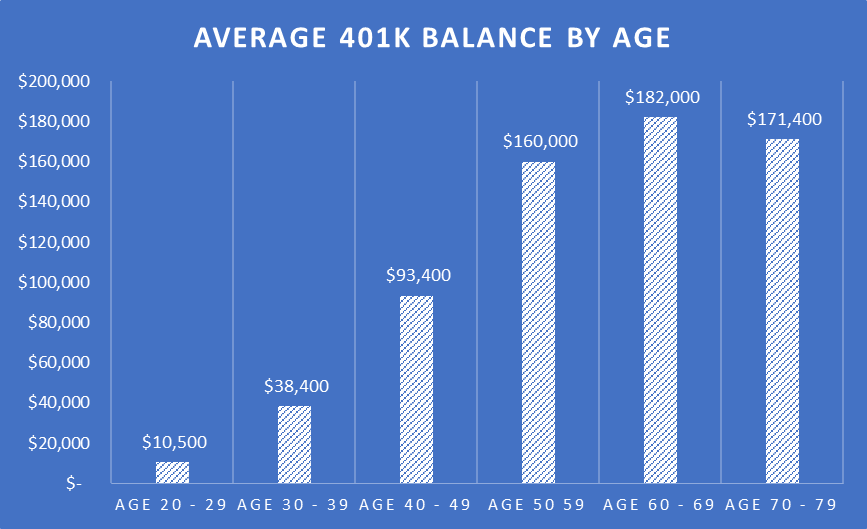
A beneficiary IRA rmd calculator can be used to calculate how much your loved one will get upon your death. The calculation is made based on the deceased account owner's age at the time. To calculate this amount, IRS uses the table Single Life Expectancy.
IRA
The Beneficiary IRA RMD calculator will help you calculate the required minimum distributions (RMDs) for your beneficiaries. If the beneficiary is more than 70 years old, they do not need to take RMDs. Instead, the RMD can only be taken if the beneficiary is the sole beneficiary of at most one IRA.
The Uniform Lifetime Table was recently modified by the IRS in order to account for longer lives. Tax implications can arise from taking an RMD at any age. It's best to speak with a financial advisor to ensure you are getting the right RMDs. Be aware that spouses inherit certain rights that aren't available to other beneficiaries.

The Contact Profile must record the beneficiary’s birthdate and the age for the child. The 2001 Rules are applicable to beneficiaries who are under 26. Once a child reaches age 25, he or she begins receiving a payout period of 10 years. The child's age must be known to the Beneficiary IRA RMD calculation. The calculator also takes into account the child's age at 12/31 of previous years.
401(k)
In order to calculate the RMD for a beneficiary of a 401(k) or IRA, you will first need to know the account owner's age. This is the account owner's age at the time they died. It will also determine the beneficiary's RMD. This calculator allows you to determine how much beneficiary will need to withdraw from your account in the year following their death.
If you are the beneficiary in a traditional IRA the calculation will be different. If your spouse is the beneficiary, you will need to use the IRS Joint Life and Last Survivor Expectancy Table (Publication 590) to calculate your RMD. This table includes an age factor, which is determined by the account owner's average age. This factor will also be applied to the IRA beneficiary's age at death.
403(b)
An IRA RMD calculator can be used to calculate your minimum distribution (RMD), from either an IRA or a 403(b), plan. This tool requires the account owner's name, account balance, and birthdate to calculate the amount of your current year RMD. Your spouse's information is also necessary for this calculator to properly calculate your RMD. Your RMD will be calculated for this account only. Please enter your other qualified retirement savings accounts separately.

If you're not sure about your IRA beneficiaries, you can find out their life expectancies by using an IRA rmd calculator. This information is used for determining the beneficiary's RMD. If your IRA owner passed away in the past year, your spouse would receive the distribution. You would also have to wait until the next calendar year to begin taking RMDs.
FAQ
What Are Some Benefits to Having a Financial Planner?
A financial strategy will help you plan your future. It will be clear and easy to see where you are going.
You can rest assured knowing you have a plan to handle any unforeseen situations.
Financial planning will help you to manage your debt better. You will be able to understand your debts and determine how much you can afford.
Your financial plan will protect your assets and prevent them from being taken.
How to choose an investment advisor
Choosing an investment advisor is similar to selecting a financial planner. There are two main factors you need to think about: experience and fees.
It refers the length of time the advisor has worked in the industry.
Fees are the cost of providing the service. These costs should be compared to the potential returns.
It is crucial to find an advisor that understands your needs and can offer you a plan that works for you.
What is wealth administration?
Wealth Management can be described as the management of money for individuals or families. It includes all aspects regarding financial planning, such as investment, insurance tax, estate planning retirement planning and protection, liquidity management, and risk management.
Statistics
- A recent survey of financial advisors finds the median advisory fee (up to $1 million AUM) is just around 1%.1 (investopedia.com)
- As previously mentioned, according to a 2017 study, stocks were found to be a highly successful investment, with the rate of return averaging around seven percent. (fortunebuilders.com)
- Newer, fully-automated Roboadvisor platforms intended as wealth management tools for ordinary individuals often charge far less than 1% per year of AUM and come with low minimum account balances to get started. (investopedia.com)
- According to a 2017 study, the average rate of return for real estate over a roughly 150-year period was around eight percent. (fortunebuilders.com)
External Links
How To
How to invest once you're retired
Retirees have enough money to be able to live comfortably on their own after they retire. But how do they invest it? You can put it in savings accounts but there are other options. You could, for example, sell your home and use the proceeds to purchase shares in companies that you feel will rise in value. Or you could take out life insurance and leave it to your children or grandchildren.
If you want your retirement fund to last longer, you might consider investing in real estate. If you invest in property now, you could see a great return on your money later. Property prices tend to go up over time. Gold coins are another option if you worry about inflation. They don’t lose value as other assets, so they are less likely fall in value when there is economic uncertainty.